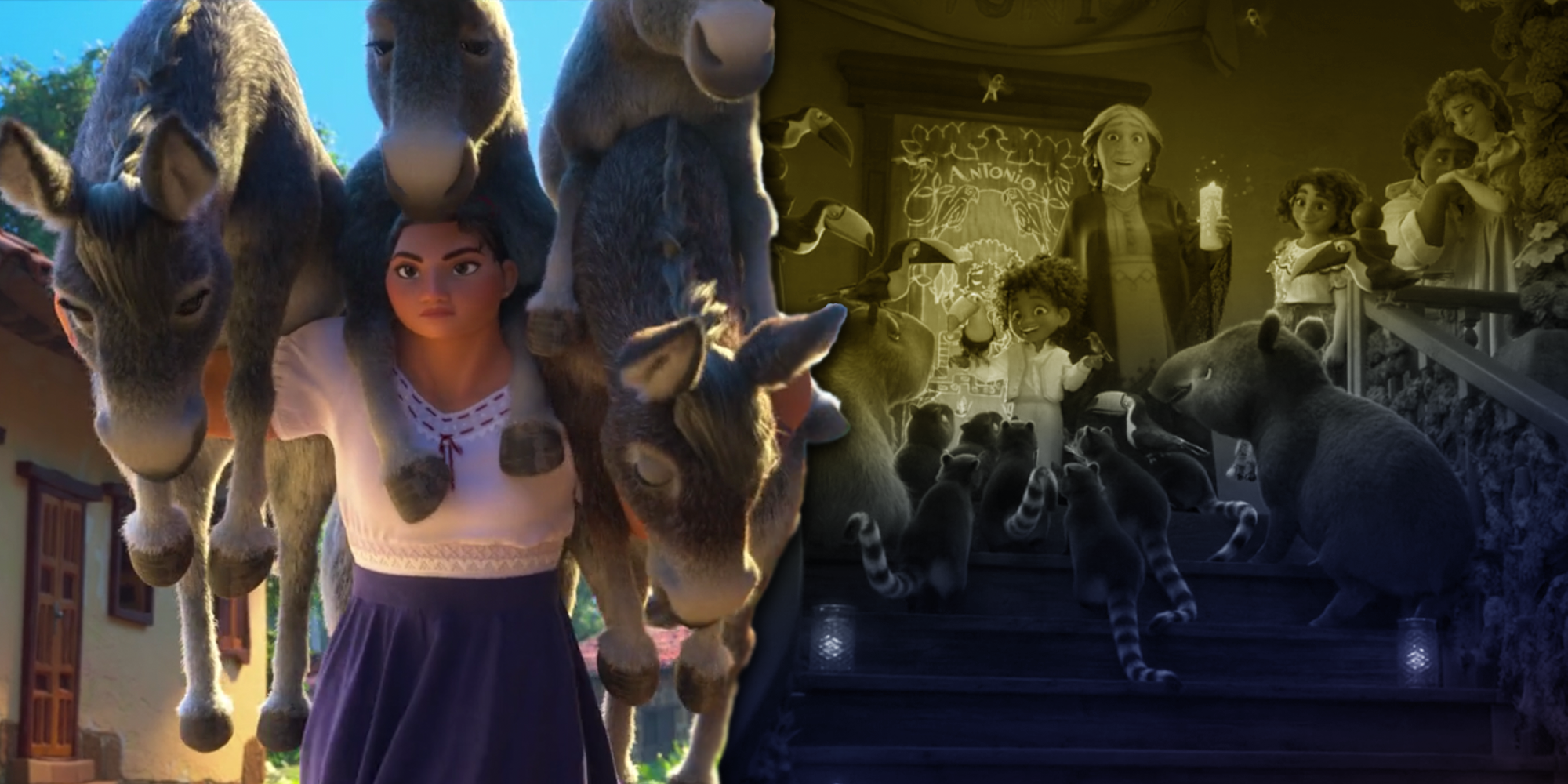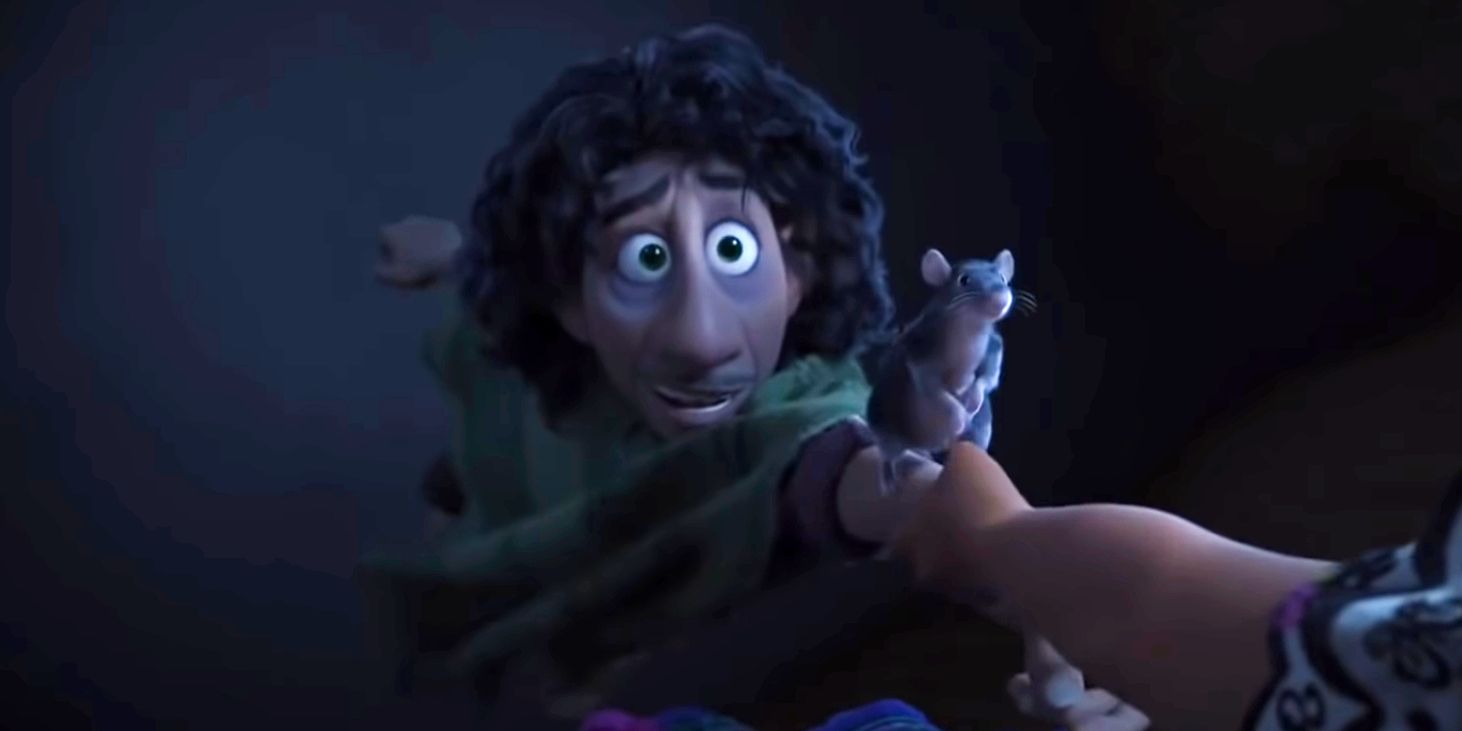The animals in Disney's Encanto have real meaning, as they capture the personalities of the beloved animated film's many colorful characters. Numerous Colombian animals are featured throughout the film, particularly in scenes involving little Antonio (voiced by Ravi Cabot-Conyers), whose gift enables him to understand them. A menagerie of capybara, tapir, coatimundis, toucans, hummingbirds, and even a jaguar fill Antonio's room when he receives his gift during his fifth birthday ceremony. These animals reflect the rich diversity of fauna in the rainforests of Colombia while adding color and movement to Encanto's musical story.
Antonio's squawking and snuffling friends are not the only animals in the movie. Donkeys feature in Luisa's (Jessica Darrow) song, "Surface Pressure", and rats scurry in the walls where Bruno (John Leguizamo) lives in hiding. Yet perhaps the most memorable of all the animals featured throughout Encanto are the iconic butterflies that appear when Mirabel (Stephanie Beatriz) and Abuela Alma (María Cecilia Botero) join together in mutual understanding.
As well as having adorable eyes and fluffy tails, Encanto's animals carry a symbolic meaning as they explain the emotions and personalities of characters they are associated with. As pack animals notorious for their ability to carry heavy loads, the donkeys which Luisa lifts represent the intense burdens placed upon her as the "strong one" of the family. While Luisa’s secret room is never revealed, the donkeys and her endless heavy lifting demonstrate the constant demands placed upon her. In the song "Surface Pressure," it is clear that this donkey-carrying superhero wants her family and community stresses to be eased and for the donkeys to carry her instead, as Luisa reveals her dream of riding a donkey-unicorn covered in glitter into a sky of pink clouds. By the end of the movie, the support she craves is finally granted. When she confides to her sisters Isabela (Diane Guerrero) and Mirabel "sometimes I cry," both sisters lean in and reassuringly tell her "so do I."
Like Luisa, other characters are represented by animals as well. Hidden in Casita's walls, Bruno befriends the rats that live there. In the same way that Bruno's bad visions of the future cause his family and community to shun and misunderstand him as a bringer of terrible luck, rats are seen as untrustworthy and frightening creatures that live in hiding. The rats which scurry into the walls of Bruno's cave initially scare Mirabel, and in the song "We Don't Talk About Bruno," rats cast menacing shadows on the wall as an additional measure of symbolism. Bruno similarly gives Mirabel a fright when she first encounters him, but she soon learns that he and the rats are harmless and sweet. Bruno helps Mirabel to save the family he loves, and his adored rats just want to eat free food and play with his personal effects.
While donkeys and rats represent individual characters, butterflies appear to unite the family. Butterflies are linked to Mirabel and Alma, whose clothes and a magical candle depict these fluttering creatures. They also appear in the portrait of Abuela's deceased husband Abuelo Pedro, whose sacrificial death at the hands of shadowy marauders is recounted in the heart-rending song "Dos Oruguitas". While the first part of the song features "oruguitas" (caterpillars), the ending of the song focuses on "mariposas" (butterflies) as Mirabel and Alma join hands surrounded by yellow butterflies in the river where Pedro died. The transformation from caterpillars into butterflies signifies the development of their relationship as light floods into the scene and Mirabel and Alma finally heal the scars of the past by understanding and accepting one another for who they truly are. Each wing, snout, and tail in Encanto contributes real meaning to the magical story.


